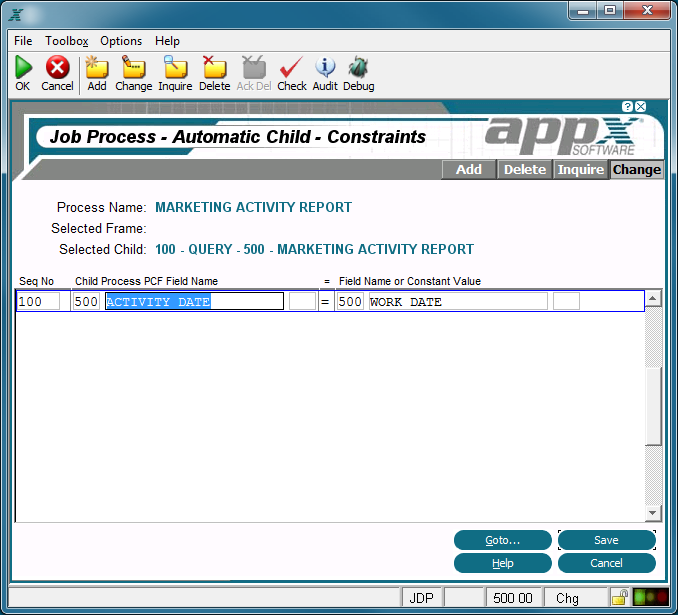Chapter 3-14: Automatic and Optional Children |
Child Constraints Option Child Constraints allows entry of child selection criteria specifications. The Child Constraints overlay, shown below, is a scrolling display.
Child Constraints Overlay The Child Constraints Overlay contains some or all of the following fields. Seq No displays a sequence number that is defaulted by APPX. This default sequence number can be overridden, but must uniquely identify each constraint. Since all of the constraints are ANDed together, the order the constraints are applied in is not significant. The first field that is defined in add mode is assigned sequence number 100, and additional fields are assigned a number equal to the highest existing sequence number, plus 100. Child Process PCF/App/Field Name/Occ designates the field (by application ID, field name, and occurrence number) from the child's process control file, which must be equal to the Field Name or Constant entered beside it. This entry is not restricted to a key field. App/Field Name or Constant/Occ identifies a field or constant. The field you entered above must be equal to this field or constant. Other relations (for example, LE or GT) are not permitted. |
Application Design Manual "Powered by Appx Software"1124 ©2006 By APPX Software, Inc. All Rights Reserved |
